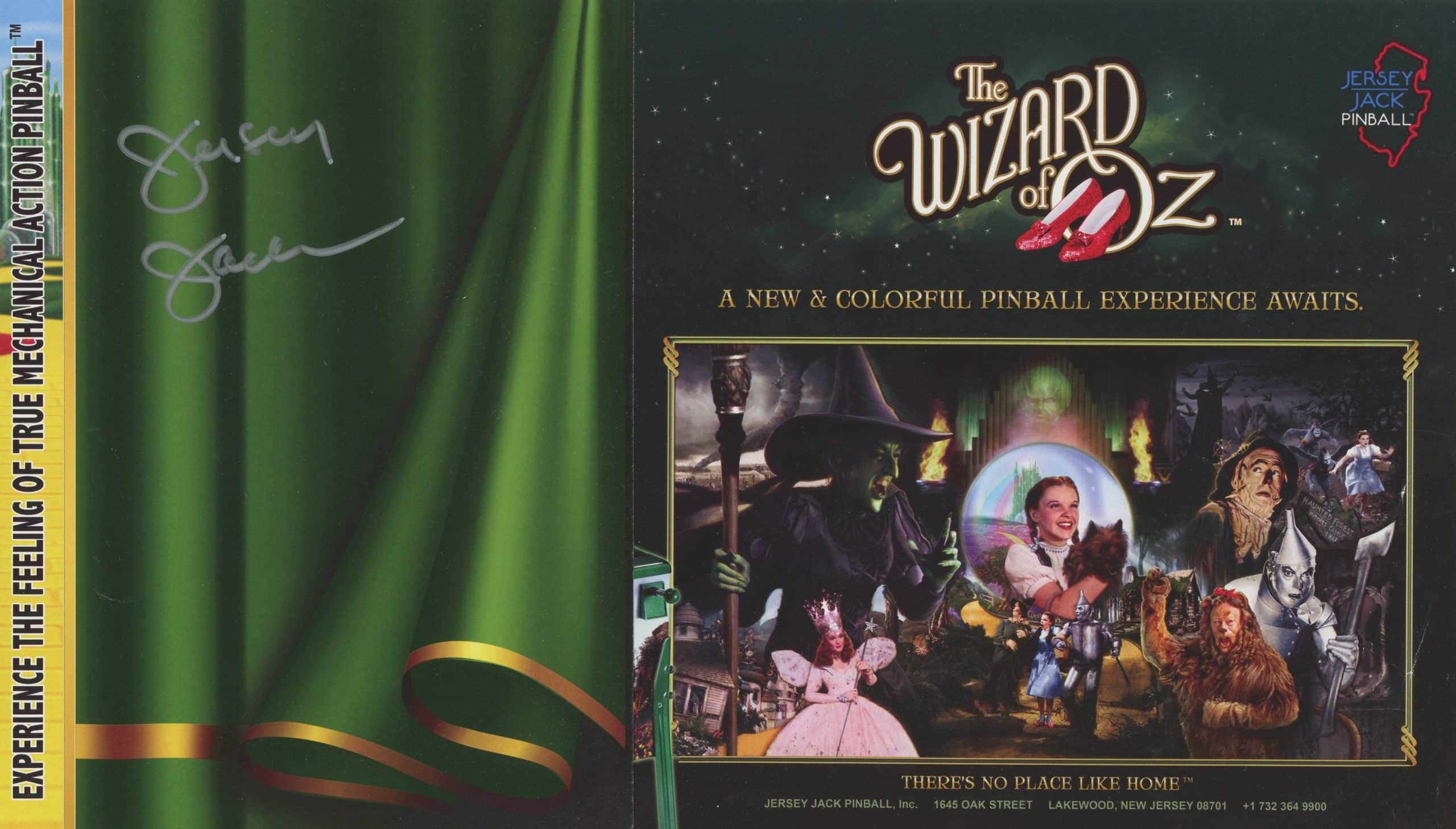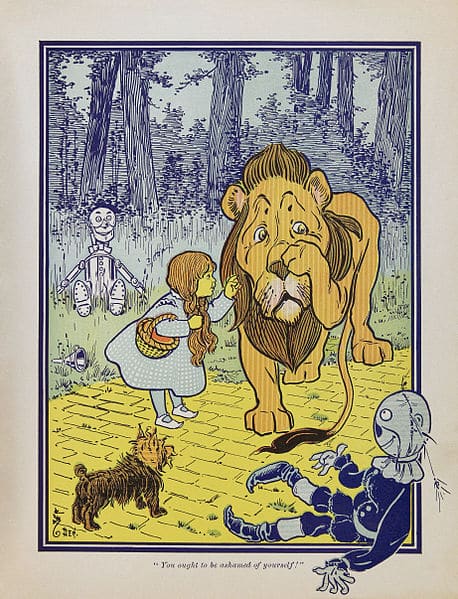L. Frank Baum’s classic novel, The Wonderful Wizard of Oz, captivated generations of audiences with its iconic characters, adventurous storyline, and captivating setting. Published in 1900, the novel inspired countless adaptations in a variety of mediums including stage plays, films, novels, and video games. The Wizard of Oz film, released in 1939 by MGM, remains a legendary title and cultural icon. This summer, visitors to The Strong’s Pinball Playfields exhibit have the opportunity to play The Wizard of Oz pinball.
In 2011, Jack Guarnieri (Jersey Jack) formed Jersey Jack Pinball Factory with the intent to revitalize pinball with a full-featured game that included a lot of mechanical toys and up-to-date electronics. When Jersey Jack started the project, he knew “it had to have universal appeal. It had to appeal to young people, older people, men, women.” He secured the rights to The Wonderful Wizard of Oz and hired designer Joe Balcer (The Simpsons Pinball Party and South Park Pinball) and programmer Keith Johnson (The Simpsons Pinball Party and Revenge from Mars) to join the company.

The finished product presents the same dazzling appeal as the 1939 film. The wide-bodied cabinet (the first built since companies stopped manufacturing the form in the 1990s due to high cost and low demand) stretches horizontally to accommodate more toys, gadgets, and machines. Toys include popular rudiments of the film such as ruby slipper flippers, Munchkin huts and roofs, the Wicked Witch of the West trapped under a house, the angry apple trees, a hot air balloon, and a crystal ball, among others. RGB LED lights generate 32 million unique colors and light the playfield. The cabinet is topped with a 26-inch widescreen monitor that displays full-color, cinema-grade film clips.
I initially gravitated toward a game of The Wizard of Oz pinball because of the childhood memories the story triggers. I also liked it because it presented an array of complex themes in American culture. I expect the game appealed to legions of other players for the same reasons. Historian William R. Leach notes that The Wonderful Wizard of Oz constituted Baum’s “most mature, integrated expression of all of the themes and fantasies that had ever influenced him or excited his imagination.”
 When Baum published The Wonderful Wizard of Oz, he earned a reputation as the “Father of the American Fairy Tale.” He rid his story of the moralistic imperatives that proved the heart of traditional fairy tales. Baum introduced a fraud—a common man (the Wizard) who attempted to deceive others into believing he was all-powerful, and an all-American girl (Dorothy) who used willpower to carry out her desires. He also incorporated his views on gender roles and race issues in the tale. Prior to writing The Wonderful Wizard of Oz, Baum’s wife, Maud Gage, a Cornell graduate, a companion of Susan B. Anthony, and a women’s right campaigner had enlisted Baum to publically support women’s right to vote. Baum later extended his support of gender equality to his writings—all of the strong characters in The Wonderful Wizard of Oz are female including Dorothy, Glinda, the Good Witch of the South, the Good Witch of the North, and the Wicked Witches. He also advocated for a society where races mingle democratically. Dorothy celebrates the differences of others, and the Winkies of the West, the Quadlings in the South, and the Munchkins in the East are friendly with each other and consider war the ultimate evil. Although the novel is more than 100 years old, the themes remain pertinent.
When Baum published The Wonderful Wizard of Oz, he earned a reputation as the “Father of the American Fairy Tale.” He rid his story of the moralistic imperatives that proved the heart of traditional fairy tales. Baum introduced a fraud—a common man (the Wizard) who attempted to deceive others into believing he was all-powerful, and an all-American girl (Dorothy) who used willpower to carry out her desires. He also incorporated his views on gender roles and race issues in the tale. Prior to writing The Wonderful Wizard of Oz, Baum’s wife, Maud Gage, a Cornell graduate, a companion of Susan B. Anthony, and a women’s right campaigner had enlisted Baum to publically support women’s right to vote. Baum later extended his support of gender equality to his writings—all of the strong characters in The Wonderful Wizard of Oz are female including Dorothy, Glinda, the Good Witch of the South, the Good Witch of the North, and the Wicked Witches. He also advocated for a society where races mingle democratically. Dorothy celebrates the differences of others, and the Winkies of the West, the Quadlings in the South, and the Munchkins in the East are friendly with each other and consider war the ultimate evil. Although the novel is more than 100 years old, the themes remain pertinent.
When Jersey Jack created The Wizard of Oz pinball game, he married two icons of American culture. The Wonderful Wizard of Oz significantly reflects on 20th century American culture. Pinball games symbolize an important form of play and help trace the evolution of an industry.



